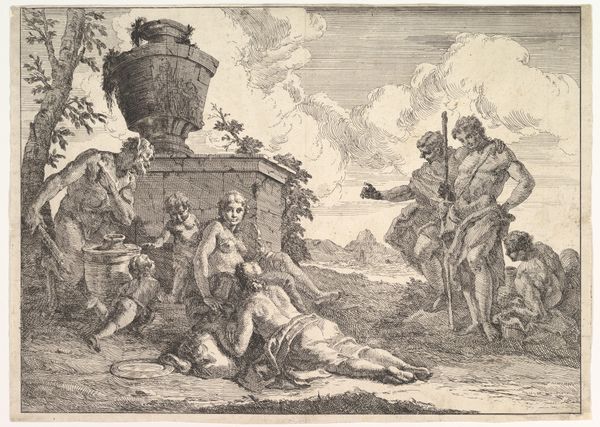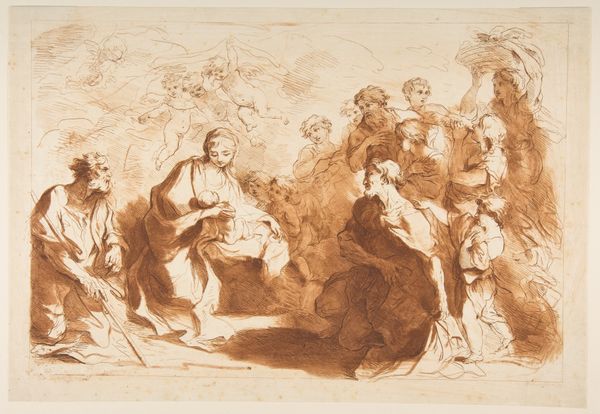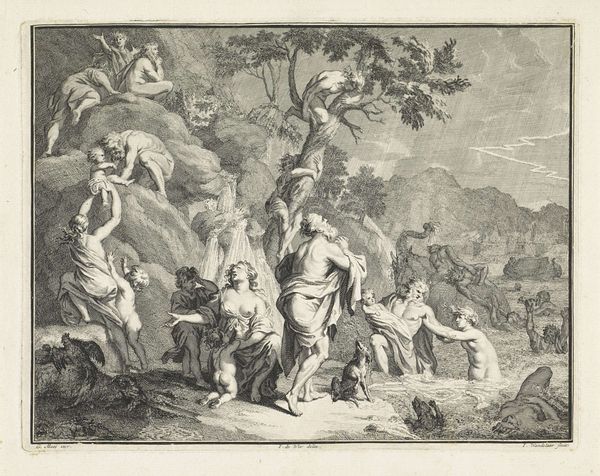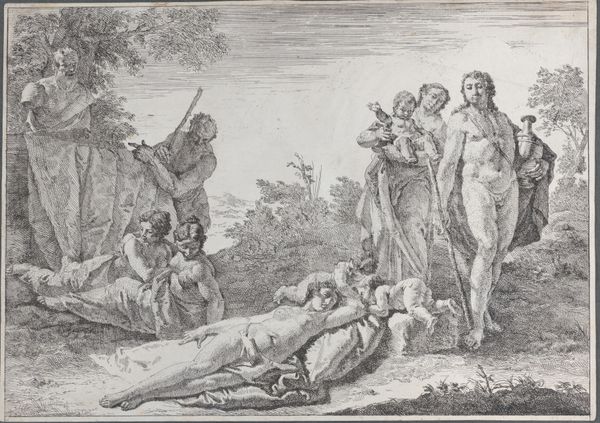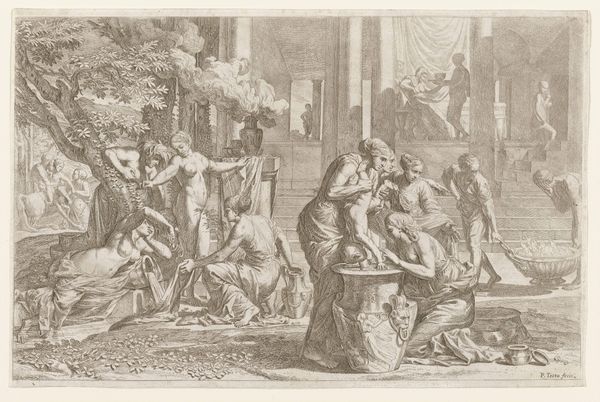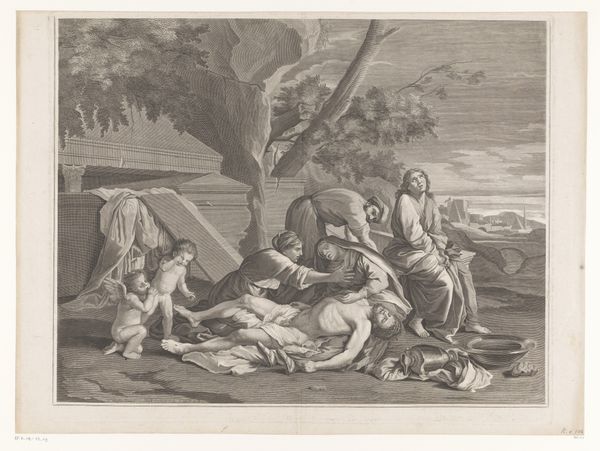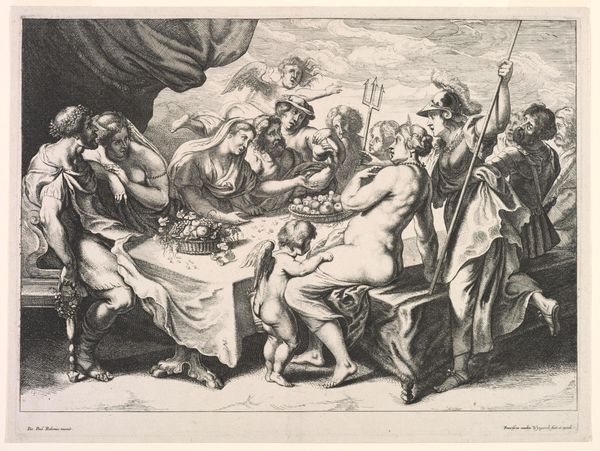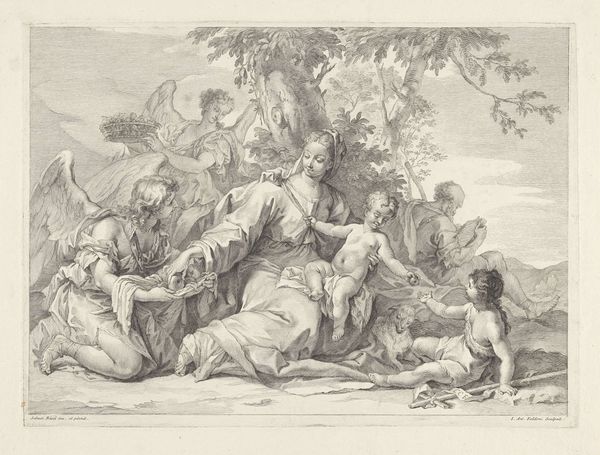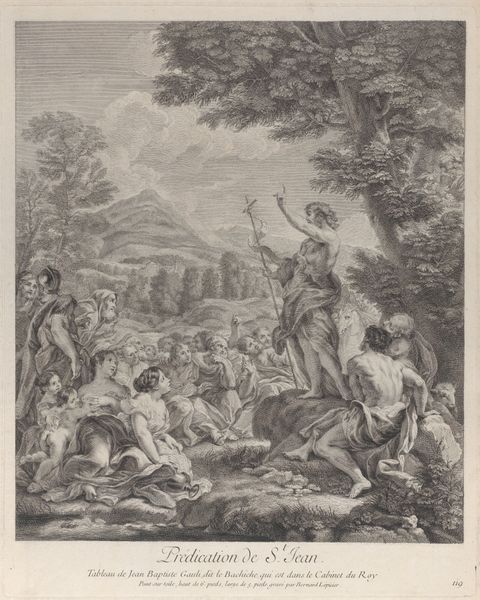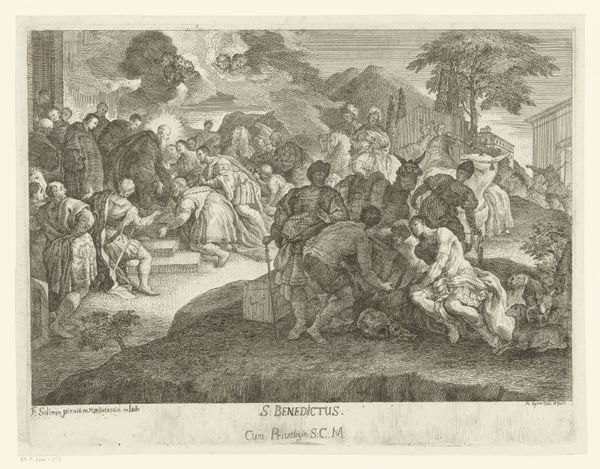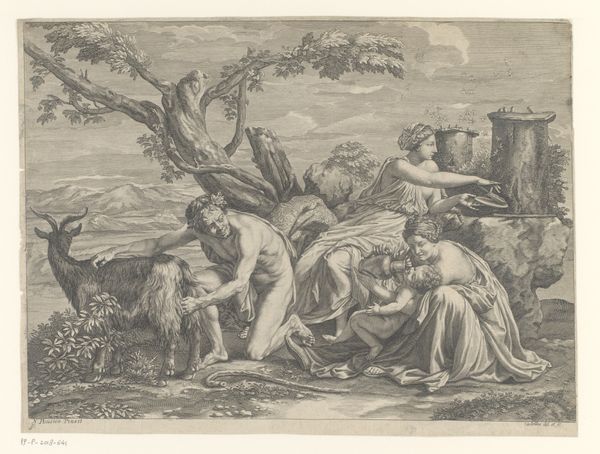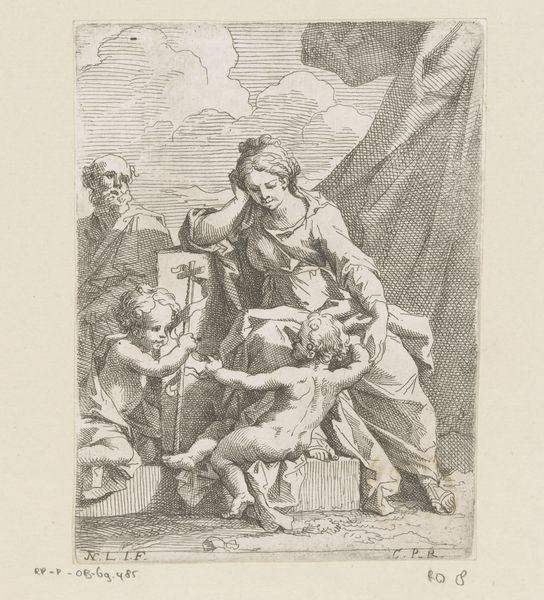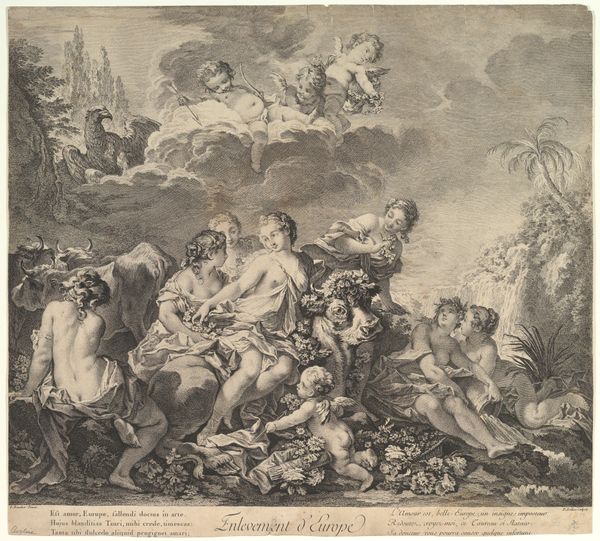
Venus and Vulcan with Three Nymphs and Three Cupids 1744
0:00
0:00
print, engraving
#
allegory
#
baroque
# print
#
figuration
#
history-painting
#
nude
#
engraving
Dimensions: plate: 28.6 × 39.2 cm (11 1/4 × 15 7/16 in.) sheet: 38.5 × 53.5 cm (15 3/16 × 21 1/16 in.)
Copyright: National Gallery of Art: CC0 1.0
Editor: This is "Venus and Vulcan with Three Nymphs and Three Cupids," an engraving made in 1744 by Francesco Fontebasso. It’s very detailed. It feels both classical and… playful, with all those figures. What are your initial thoughts about its composition? Curator: The density of figures certainly creates a dynamic surface, wouldn't you agree? Observe how the artist arranges the subjects, the strategic placement and gestures causing the viewer's eye to move in a specific way, contributing to its semiotic weight. Do you notice anything of interest in the organization? Editor: The way Venus is placed in the center, a bit higher than everyone else, definitely draws attention. But I am having a hard time following how she interacts with everyone. Curator: Indeed, this visual dominance, a formal decision if you will, is critical. The semi-nude figures allow light to move across their surfaces. Now consider, how the foreground pulls one through the scene towards a center marked by, as you rightly noted, Venus, yet with the gaze not resolved, as we see figures and landscape moving toward the margins. There is a kind of spatial and compositional game being enacted here, drawing attention to itself. The question of interaction perhaps matters less than how it stages pictorial and optical complexities. Editor: That's fascinating. I was so focused on trying to understand the story and relationship of Venus and Vulcan. I now see there's another approach where I focus more on lines and light. I did not notice the figures moving the landscape. Curator: Exactly. We find, even in works steeped in classical or mythological themes, enduring dialogues on line, composition, and form. Focusing here creates additional narratives beyond mere pictorial representation. Editor: That’s definitely given me a new way to think about prints. Thanks for expanding my perspective. Curator: A rewarding interpretation for both of us.
Comments
No comments
Be the first to comment and join the conversation on the ultimate creative platform.
